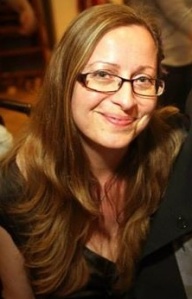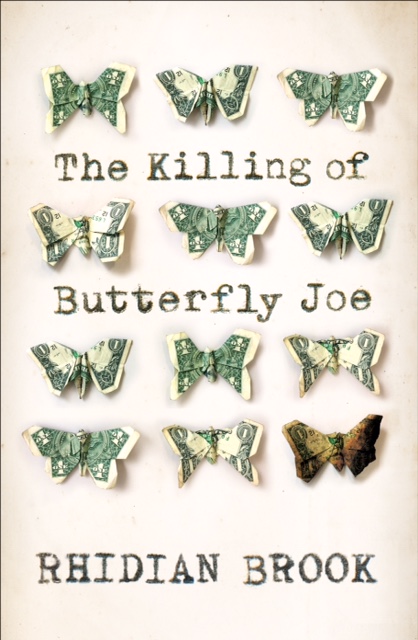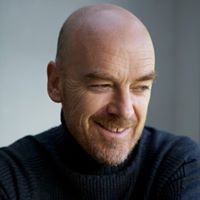
I’m delighted to be taking part in the blog tour for Claire Dyer and her wonderful new book – The Last Day. I have a Q&A for you and a short review. Thank you to Claire and Emily Glenister for asking me to take part in the tour.
So, Claire, a few questions for you.
Firstly, can you tell us a little bit about The Last Day?
The Last Day is about three people: Boyd, his ex-wife Vita and his new, much-younger girlfriend Honey. It’s told from their three viewpoints from the moment when, because he finds himself in financial trouble, Boyd asks Vita if he and Honey can move into the house he and Vita used to share. Of course Vita says yes, because she is totally over Boyd.
However, what none of them predict is how living together will change them. They all have secrets, they all have pasts which have the annoying habit of wrong-footing them and, without giving too much away, they finish up in a completely different configuration at the end of the book!
In The Last Day, you have three different viewpoints. How easy/difficult was that to do? (I normally write with a single viewpoint so I’m in awe of anyone who writes with multiple characters).
It was actually not too bad! I wrote the chapters so they followed on from one another. I find this easier than writing each POV separately and then weaving them together because, by doing it the former way, I find actions and plotlines can chime and evolve.
The tricky bit was deciding which POV should be in first person and which in third. Originally, Honey’s story was told in the first person but on the second rewrite, Vita started shouting at me in only the way she can and so I changed her from third to first and Honey from first to third: it was a real labour of love, every pronoun and every verb! I was boggle-eyed by the end! But I think it was worth it. Vita’s voice is now the central one and that is how it should be.
Where did the inspiration for The Last Day come from?
The idea came to me when I thought about how, if someone painted a portrait of the same person over the course of a year, it could show that person changing in some way, and also, having worked on some ekphrastic poetry (which is poetry in response to works of art), I’m fascinated by the relationship between artist and sitter and so I wanted to explore that too.
The story has changed somewhat since its early inspiration but what remains the same is how Vita and Honey’s relationship develops over the course of the book.
Do you have a writing routine?
I wish I did! What I tend to do if I’m writing a novel is to plan my week so that I have at least a couple of mornings to write, or I take myself off to a writing retreat if I can. Other than that, I just try and write when time allows.
We all know that writing is like holding a butterfly in our hands: if we hold it too tight, we’ll suffocate it; if we open our hands too much, it’s at risk of flying away. Therefore, sometimes being in the right place at the right time when the story is there in my head is a bit like aligning the planets (sorry for the mixed metaphor)! However, I do seem to manage but it’s certainly not a structured or thought-through thing!
You’re a multi-talented writer with lots of strings to your bow – novelist, poet, writing teacher, writing mentor, radio panellist on BBC Berkshire and you run a book club! Do you have a favourite?
Oh gosh, thank you! I’ve never been called multi-talented before! I tend to think of myself as a bit of a jack of all trades! However, I do love everything I do and consider myself very lucky that I can spend my time doing such a wide variety of different things.
I don’t have a favourite as such, to me all the things I do are part of the whole but I guess if you were to put me on the spot, I’d say that the best bit is when it’s just me and the screen and the writing is flowing, my characters are saying and doing interesting things, I’m making good word choices and when I press Save I know I’ve created something that wasn’t there before: making imaginary worlds (whether in fiction or poetry) real is an absolute treat!
Thank you so much for inviting me to take part in this Q&A. It’s been a huge pleasure.
And thank you for taking the time to answer my questions, Claire.
Now, the book!
The Blurb

They say three’s a crowd but when Boyd moves back in to the family home with his now amicably-estranged wife, Vita, accompanied by his impossibly beautiful twenty seven-year-old girlfriend, Honey, it seems the perfect solution: Boyd can get his finances back on track while he deals with his difficult, ailing mother; Honey can keep herself safe from her secret, troubled past; and Vita can carry on painting portraits of the pets she dislikes and telling herself she no longer minds her marriage is over.
But the house in Albert Terrace is small and full of memories, and living together is unsettling.
For Vita, Boyd and Honey love proves to be a surprising, dangerous thing and, one year on, their lives are changed forever.
My review
When I read this book, it reminded me of a verse from the Bible (and I’m completely taking this out of context) – ‘A cord of three strands is not quickly broken’. Without meaning to do so, Honey is the third strand that weaves Boyd and Vita back into each other’s lives again. There’s naturally some chaffing as this takes place but despite herself, Vita ends up liking Honey. But secrets and lies threaten the strength of the cord, and as the strands weaken, someone is going to snap.
It’s Claire Dyer’s strength as a writer that allows this book to be wholly believable. Creating one authentic character is hard enough but to create three is remarkable. Each voice was clear and distinct and I felt I knew them all really well by the end of the book.
The writing in The Last Day is sublime. Not just the stunning descriptions that place you in the setting but also the acute observations made by the characters, Vita in particular –
‘Isn’t it strange how you never know you’ve lived the last day of one kind of life until you realise that kind of life is over, and you’re looking back at it and can pinpoint the exact day that everything changed?’
There are quite a few themes running through this book but the strongest for me was grief. Claire Dyer explores this in various forms. Grief is a tightrope walk between sanity and insanity and Claire handles this with complete sensitivity and empathy.
The Last Day is a more gentle read than other psychological thrillers but it’s no less compelling. A stunning novel.
You can buy the book here
The author

Claire Dyer’s novels, The Moment and The Perfect Affair and her short story, Falling for Gatsby are published by Quercus.
Her poetry collections, Interference Effects and Eleven Rooms, are published by Two Rivers Press.
She has an MA in Creative Writing from Royal Holloway, University of London and teaches creative writing for Bracknell & Wokingham College. She also runs Fresh Eyes, an editorial and critiquing service.
In 2016, Claire penned and performed a poem for National Poetry Day, called The Oracle, for BBC Radio Berkshire.
Claire’s new book, The Last Day, will be published by The Dome Press in February 2018.




















